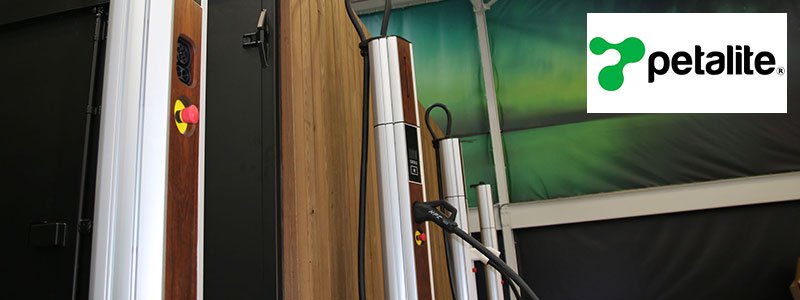Addressing the ‘charge anxiety’ among EV drivers
Archived article
Archived article: please remember tax and investment rules and circumstances can change over time. This article reflects our views at the time of publication.
In this article, we cover Petalite – one of the most promising SEIS investments we have seen. Petalite has redesigned current Electric Vehicle (EV) chargers’ technology to solve reliability issues and address ‘charge anxiety’ among EV drivers.
Petalite’s technology took nearly 10 years to develop but is now market ready with release of commercial solutions planned for later this year, not guaranteed.
Read more about the company, and how Startup Funding Club SEIS fund’s original £60,000 investment is now valued at £3.2 million (unrealised, past performance is not a guide to the future) to form your own view. Plus, find out how you can invest in similar companies through SEIS and EIS. Past performance is not a guide to the future.
Important: The information on this website is for experienced investors. It is not advice, research, nor personal recommendation to invest. If you’re unsure, please seek advice. SEIS and EIS investments are high risk and you could lose the money you invest.
 What does Petalite do?
What does Petalite do?
In the UK, it is reported that one of the top concerns for consumers considering an EV is the lack of charging infrastructure. Although the amount of charging points has been consistently increasing, it is estimated that charger numbers will need to increase tenfold on 2022 levels by 2030 to keep up with the pace of EV sales. Moreover, many existing chargers may last only a few years due to unreliable component design. In other words, the current infrastructure is neither extensive nor reliable enough for the long term.
Petalite is the only company in the world that has successfully innovated a new EV charging technology, reinventing it from the ground up. The company’s goal is to make EV chargers last longer, solve the ‘charge anxiety’ among EV drivers by making chargers more reliable, and enable mass adoption of EVs. For this, they created a proprietary system called Sinusoidal Direct Current (SDC) PowerCores. These are designed to solve common issues experienced by normal chargers – primarily around reliability, return on investment and infrastructure life. Unlike standard chargers, this new form of circuitry does not require high voltage aluminium capacitors – an expensive and unreliable component of current EV chargers. These are said to last up to 30 years and require lower cost to implement.
Each PowerCore cabinet (pictured below) houses hundreds of these PowerCores and because of the high number of units used, even if one of them cuts off, its multiple backups continue to work. EVs can still use Petalite chargers even if they are being serviced. This means that it can achieve uptime of 99.9%, and with a 300,000-hour estimated lifetime, three times the life of some other EV chargers.
In June 2022, Petalite raised £2.5 million in a round led by AM Impact Partners, founded by ex-TPG partner Michael MacDougall and Ashley Unwin. Mr Unwin, previously a managing partner of PwC’s Consulting Division and a member of PwC’s Executive Board, has joined Petalite as Non-Executive Chairman. The company intends to use the funding to hire key team members in preparation for the planned release of Petalite’s first commercial solutions later this year – not guaranteed.
 Petalite design hub: PowerCore cabinets and charging posts in action.
Petalite design hub: PowerCore cabinets and charging posts in action.Startup Funding Club on Petalite
SFC Capital first backed Petalite in 2015, investing £60,000 under SEIS.
Petalite’s technological progress and SFC Capital’s belief that its technology is both revolutionary and unique led to follow-on EIS funding in 2018 and 2020.
Early indications are promising. After the £2.5 million investment in June 2022, SFC’s initial £60,000 SEIS stake is now valued at £3.2 million, a 53.3x unrealised return. Its 2018 EIS investment is held at 47.7x unrealised return, and the 2020 EIS investment is valued at 23.7x return. Past performance is not a guide to the future.
Remember, unrealised returns are where cash has not been returned to investors. While there has been an uplift in the valuation of the shares, there are, of course, no guarantees that the shares will be realised at a profit or at all.
This is potentially the portfolio company that I am the most excited about, as I think the potential is enormous and the technology is still very unique.
Joseph Zipfel, Chief Investment Officer, SFC Capital
Want to invest using SEIS/EIS in companies similar to Petalite?
SFC Capital is the most active Angel and Seed investor in the UK and among the most active in Europe. Experienced investors could gain exposure to companies like Petalite, although not Petalite itself, by investing in its Startup Funding Club SEIS and Startup Funding Club Angel Fund EIS funds, which are both currently open for investment.
Through its widely known SEIS Fund, SFC Capital aims to invest in a portfolio of very early-stage companies with innovative products and disruptive technologies which have the potential to generate successful exits at a significant (tax-free) multiple of the cash invested. The team targets a return of 3x with a holding period of five to eight years, not guaranteed. Please remember most of the businesses are very early stage with little or no revenue, making them very high-risk.
Startup Funding Club SEIS Fund – Performance per £100 invested in each tax year
Source: SFC, as at 30 September 2022. Past performance is not a guide to future performance. The chart shows realised returns (where share proceeds have been returned to investors as cash) and unrealised returns (where cash has not yet been returned and the value of the investments is based on the manager’s own valuation methodology). There is no ready market for unlisted shares. The figures shown are net of all fees and do not include any income tax relief or loss relief.
As described above, Startup Funding Club Angel Fund EIS focuses on what SFC Capital considers to be its most promising seed companies as they transition from the “startup” to “growth” phase. The fund targets a return of 3x over a holding period of four to seven years, not guaranteed. This follow-on strategy could help mitigate some risks for investors. By this point, most portfolio companies should have demonstrated commercial traction and SFC Capital should know them well, having had a board seat for some time. However, investors should note these are still young companies and high-risk investments. There are no guarantees.
Startup Funding Club EIS Fund – Performance per £100 invested in each tax year
Source: SFC, as at 30 September 2022. Past performance is not a guide to future performance. The chart shows realised returns (where share proceeds have been returned to investors as cash) and unrealised returns (where cash has not yet been returned and the value of the investments is based on the manager’s own valuation methodology). There is no ready market for unlisted shares. The figures shown are net of all fees and do not include any income tax relief or loss relief.
Wealth Club aims to make it easier for experienced investors to find information on – and apply for – investments. You should base your investment decision on the offer documents and ensure you have read and fully understand them before investing. The information on this webpage is a marketing communication. It is not advice or a personal or research recommendation to buy any of the investments mentioned, nor does it include any opinion as to the present or future value or price of these investments. It does not satisfy legal requirements promoting investment research independence and is thus not subject to prohibitions on dealing ahead of its dissemination.
Startup Funding Club SEIS Fund
Learn more about SFC Capital's SEIS Fund – its manager, strategy, risks, what type of companies it invests in, the manager’s performance record, charges and our view.
Read more and see how to apply